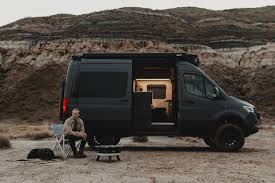The homeless population in Bozeman, Montana, has seen a 50% increase since 2020, with the issue becoming more visible due to urban camping. This surge in homelessness is closely tied to soaring housing costs, particularly evident in Bozeman, which boasts the highest rents in Montana. The phenomenon of “urban camping,” where individuals reside in RVs or vehicles parked on city streets, has become increasingly prevalent as housing expenses continue to escalate, affecting communities across the Western United States.
Bozeman, nestled in the Rocky Mountains near Yellowstone National Park, is home to approximately 56,000 residents. According to Montana PBS, the number of Bozeman residents living in RVs or cars has skyrocketed by 200% over two years, coinciding with a 50% increase in the overall homeless population since 2020.
The surge in homelessness corresponds with a significant spike in housing costs. City data reveals that the median listing price for a home surged from $669,000 in early 2020 to $1.2 million in 2024. Rental costs in Gallatin County, where Bozeman is situated, surged nearly 19% from 2019 to 2022, solidifying the county’s status with the highest rents in Montana.
Bozeman Mayor Terry Cunningham acknowledged the issue, emphasizing the recent emergence of urban camping as a notable concern. Despite ongoing efforts, including the formation of a task force to address urban camping, tensions persist over how best to tackle the issue.
The city’s approach to urban camping underscores the complexity of the situation. While efforts to mitigate litter and provide sanitation facilities have been made, debates continue over the city’s enforcement of existing laws regarding camping on public streets. Some residents argue that the city has been too lenient, while others contend that individuals living in their vehicles do so out of necessity.
In response, the city implemented an ordinance in November aimed at regulating urban camping, limiting stays at a single location to 30 days without extension and prohibiting camping in designated areas such as businesses and schools. However, the effectiveness of these measures remains uncertain, with some individuals expressing concerns about the increasing difficulty of homelessness.
The city asserts its commitment to addressing the underlying issues contributing to homelessness, including efforts to increase affordable housing and collaborate with nonprofits to establish a 24/7 shelter. As Bozeman grapples with these challenges, the community remains divided, highlighting the ongoing complexity of addressing homelessness in the region.
Being Frugal
Suze Orman has a steadfast frugal habit that might surprise you. She adamantly refuses to dine out, considering it one of the most significant money drains. To her, dining out falls into the category of “want” rather than “need,” aligning with her broader approach to saving and spending.
Living beneath your means but within your needs is key, according to Orman. Despite the success of her book “9 Steps to Financial Freedom,” she chose a modest $250,000 apartment in New York City over a lavish penthouse she could afford. She and her wife, KT, regularly assess purchases by asking, “Is this a want or a need?”
Orman emphasizes the importance of pausing to evaluate whether something is truly necessary before buying it. She suggests incorporating this practice into your routine for three months to see its impact.
Interestingly, while Orman promotes mindful spending, she’s not a fan of traditional budgets. She believes that strict budgeting leads to pent-up desires, often resulting in excessive spending bursts.




